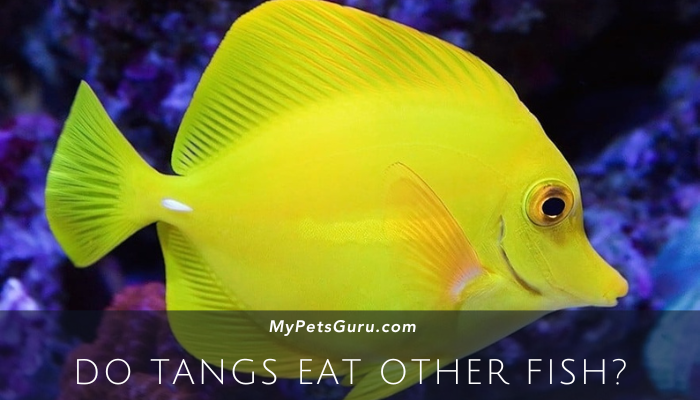- Tangs are primarily herbivorous fish, but some species may occasionally eat small invertebrates or fish fry.
- The diet of tangs consists mainly of algae, including both macroalgae and microalgae.
- It is important to provide a varied and balanced diet to tangs in captivity to ensure their health and well-being.
- Tangs are generally peaceful fish and are unlikely to actively hunt or prey on other fish in the aquarium.
Tangs, also known as surgeonfish, are a popular choice for aquarium enthusiasts. Their vibrant colors and unique body shape make them a visually appealing addition to any tank. One common question that arises when considering owning a tang is whether they eat other fish.
The short answer is that tangs are primarily herbivorous, meaning their diet mainly consists of plant material. However, some tang species may occasionally eat small invertebrates or fish fry. It’s important to understand the dietary needs of tangs and provide them with a suitable diet to ensure their health and well-being.
What Do Tangs Eat?
As mentioned earlier, tangs are primarily herbivorous fish. Their diet mainly consists of algae, both macroalgae and microalgae. In the wild, tangs graze on various types of algae that grow on rocks and other surfaces. This algae provides them with the necessary nutrients and fiber they need to thrive.
In aquariums, it is essential to replicate their natural diet to keep tangs healthy. This can be achieved by providing them with a variety of algae-based foods. There are specific commercially available foods designed for herbivorous fish, which contain a mixture of macroalgae and other plant-based ingredients.
Some common foods for tangs
| Food | Description |
|---|---|
| Nori (dried seaweed) | Sheets of dried seaweed that can be attached to a clip and placed in the tank. |
| Algae pellets or wafers | Pellet or wafer-shaped foods made with a combination of algae and other plant-based ingredients. |
| Spirulina flakes or pellets | Flake or pellet foods made with spirulina, a type of blue-green algae. |
| Fresh vegetables and fruits | Tangs can also be offered small pieces of vegetables like spinach, lettuce, or blanched peas. |
Can Tangs Eat Other Fish?
Contrary to their name, tangs do not typically have a taste for fish. They are generally peaceful fish that coexist well with other species in the tank. However, there have been rare instances where tangs may exhibit aggressive behavior towards smaller fish or invertebrates. These instances are usually an exception rather than the norm.
It’s important to note that tangs require ample swimming space and suitable hiding spots to establish their territory in the tank. Providing a well-planned aquarium layout with caves or rock formations will help reduce stress and potential territorial disputes among fish.
Tangs Compatibility with Other Fish
| Compatible Fish | Incompatible Fish |
|---|---|
| Clownfish | Damsels, aggressive fish |
| Gobies | Triggerfish, large predatory fish |
| Wrasses | Puffers, groupers |
| Anthias | Hawkfish, lionfish |
Keeping tangs with peaceful and similarly-sized fish that occupy different areas of the tank can help promote harmony and reduce the chances of aggression.
While tangs are primarily herbivorous fish, some species may occasionally eat small invertebrates or fish fry. Their diet should consist mainly of algae-based foods, which can be supplemented with fresh vegetables and fruits. It is important to provide them with a balanced and varied diet to ensure their overall health and well-being.
In general, tangs are peaceful fish that are unlikely to actively hunt or prey on other fish in the aquarium. However, as with any fish, there may be exceptions to this behavior. By providing suitable tank conditions and compatible tank mates, tangs can thrive in a community aquarium without posing a threat to other fish.

Hi, I’m Lila Hart, and I’m just as fish-obsessed as they come! I’ve been enamored with aquatic life since I was a little kid. Now, I’m a marine biologist with over 3 years of hands-on experience in the world of pet fish.
I’ve learned the ropes of fishkeeping through trial and error, and I’m excited to share my knowledge with you. My mission is to help you create a thriving aquatic paradise for your finned companions. Together, we’ll explore the fascinating underwater world of pet fish!

